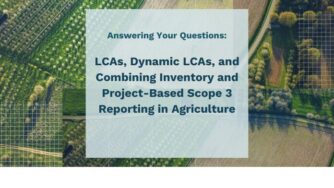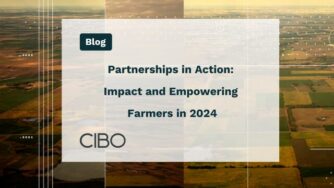Tracking crop yield across all the fields you’re interested in can be nearly impossible when you’re relying on just boots on the ground. That’s why CIBO has built tools that help enterprises access this information at scale.
By combining cutting-edge computer vision technology and artificial intelligence, and applying them to remote sensing applications like land cover classification, phenology analysis, irrigation detection, and many others, CIBO provides the deepest, most data-rich insight into every parcel of land in the United States. These insights can then be used to model and predict outcomes, like yield, at any scale and well before the harvest season.
Among the many reasons that an enterprise may want to have early crop yield predictions (like capacity planning or revenue projections), companies with net zero targets may be interested in forecasting the carbon intensity (CI) of the corn in their supply shed, requiring knowledge of the expected yield. Tools like CIBO Impact make this forecasting simple even for non-technical users, because CIBO has integrated complex science and technology into a scaled platform and user interface built for business.
If you want to discover more about how our computer vision and remote sensing capabilities work, download the whitepaper, “Computer Vision and Remote Sensing: Agricultural Information in the 21st Century” by Ernesto Brau, Ph.D., one of CIBO’s leading computer vision experts. In it, Brau explains how the vast (and growing) amount of remotely sensed data, in particular satellite imagery, collected over the past few years creates an opportunity for new and widespread insights into agricultural practices and land use.
Download the whitepaper



